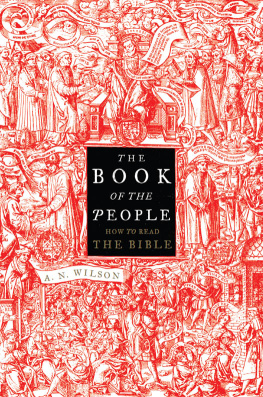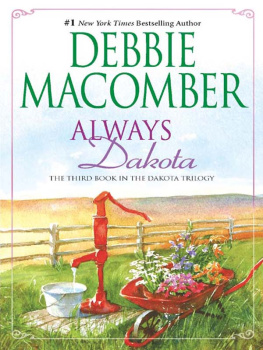Wilson - Spirit car: journey to a Dakota past
Here you can read online Wilson - Spirit car: journey to a Dakota past full text of the book (entire story) in english for free. Download pdf and epub, get meaning, cover and reviews about this ebook. City: St. Paul;MN, year: 2009;2006, publisher: Minnesota Historical Society Press;Borealis Books, genre: Adventure. Description of the work, (preface) as well as reviews are available. Best literature library LitArk.com created for fans of good reading and offers a wide selection of genres:
Romance novel
Science fiction
Adventure
Detective
Science
History
Home and family
Prose
Art
Politics
Computer
Non-fiction
Religion
Business
Children
Humor
Choose a favorite category and find really read worthwhile books. Enjoy immersion in the world of imagination, feel the emotions of the characters or learn something new for yourself, make an fascinating discovery.
Spirit car: journey to a Dakota past: summary, description and annotation
We offer to read an annotation, description, summary or preface (depends on what the author of the book "Spirit car: journey to a Dakota past" wrote himself). If you haven't found the necessary information about the book — write in the comments, we will try to find it.
Spirit car: journey to a Dakota past — read online for free the complete book (whole text) full work
Below is the text of the book, divided by pages. System saving the place of the last page read, allows you to conveniently read the book "Spirit car: journey to a Dakota past" online for free, without having to search again every time where you left off. Put a bookmark, and you can go to the page where you finished reading at any time.
Font size:
Interval:
Bookmark:

Spirit Car
Spirit Car
Journey to a Dakota Past
DIANE WILSON

For Lucille
Borealis Books is an imprint of the Minnesota Historical Society Press.
www.borealisbooks.org
2006 by Diane Wilson. All rights reserved. No part of this book may be used or reproduced in any manner whatsoever without written permission except in the case of brief quotations embodied in critical articles and reviews. For information, write to Borealis Books, 345 Kellogg Blvd. W., St. Paul, MN 551021906.
The Minnesota Historical Society Press is a member of the Association of American University Presses.
Manufactured in the United States of America
10 9 8 7 6 5 4 3 2 1
 The paper used in this publication meets the minimum requirements of the American National Standard for Information SciencesPermanence for Printed Library Materials, ANSI Z39.481984.
The paper used in this publication meets the minimum requirements of the American National Standard for Information SciencesPermanence for Printed Library Materials, ANSI Z39.481984.
International Standard Book Number
ISBN 13: 9780-873515706
ISBN 10: 0873515702
Library of Congress Cataloging-in-Publication Data
Wilson, Diane
Spirit car : journey to a Dakota past / Diane Wilson.
p. cm.
Includes bibliographical references.
ISBN-13: 978-0-87351-570-2 (cloth : alk. paper)
ISBN-10: 0-87351-570-6 (cloth : alk. paper)
Ebook ISBN: 978-0-87351-699-0
1. Wilson, Diane.
2. Dakota IndiansBiography.
3. Dakota IndiansHistory.
4. Dakota IndiansGovernment relations.
I. Title.
E99.D1W84 2006
978.0048975243dc22
2006009894
The lines from Pauline Danforths For My Grandmothers on page 3 are reprinted with permission of Pauline Danforth. Photographs on pages 8, 43, and 194 are from the collections of the Minnesota Historical Society; the photograph on page 199 was provided by Waziyatawin Angela Wilson; all other images are from the authors collections.
Spirit Car
November 6, 2002, Lower Sioux Reservation, Minnesota
August 15, 1862, Lower Sioux Reservation, Minnesota
August 19, 1862, Fort Ridgely, Minnesota
April 1884, Santee Reservation, Nebraska
August 1991, Holy Rosary Mission School, South Dakota
March 27, 1926, St. Helena, Nebraska
October 1931, Lead, South Dakota
August 1936, Rapid City, South Dakota
April 1940, Holy Rosary Mission School, South Dakota
August 1991, Golden Valley, Minnesota
March 1940, Rapid City, South Dakota
March 1940, Mendota, Minnesota
October 1992, Richfield, Minnesota
July 1997, Burke, South Dakota
July 1997, Rapid City, South Dakota
July 1997, Santee Reservation, Nebraska
1997, South Dakota
November 1999, Minneapolis, Minnesota
May 2000, St. Paul, Minnesota
August 2001, Lower Sioux Agency, Minnesota
October 2001, Cannon Falls, Minnesota
November 7, 2002, Lower Sioux Reservation, Minnesota
November 2002, Minneapolis, Minnesota
Authors Note
This book contains a variety of material: stories, facts, speculation, and insights. The stories in Book One are based on real people whose lives have been reimagined on a bedrock of facts. I wanted to bring the facts alive, to see and feel history transformed into a living, breathing reality with human beings who cared deeply about their families, about their lives. My familys stories of the 1862 Dakota War, for example, have been lost, but a great deal of information exists about the war and its aftermath. Using a technique that writer LeAnne Howe once described as intuitive anthropology, writers can extrapolate stories from the historical record. I used extensive research to make these stories as historically accurate as possible, while I tried to imagine how it would feel, for example, to take refuge at Fort Ridgely in 1862. In a sense, these are ghost stories, written to re-create a family history that has been lost over time, or repressed as too painful, or simply set aside as the gritty issues of survival demanded attention. Re-creating certain moments in history and reliving them through my own imagination has allowed me to know earlier generations of my family as human beings.
Readers can trust the information in these stories as having come from solid, dependable sources: scholarship, historical research, interviews, and firsthand experience. The small detailseating fry bread after school, drinking goats milkcame from interviews or research. The letters quoted are real, all of the people existed, and I visited each place that I wrote about. I imagined conversations and feelings based on plausible assumptions and the intuitive understanding I gained of these people after burrowing inside their lives.
Book Two continues the narrative with stories from my life, especially those drawn from the long search to understand my familys Dakota identity. My intent was to write a memoir in which I serve as a guide through a larger story. The further I dug into the past, the harder I was pulled to create a narrative that would make sense of my familys history, beginning in 1862. The result: an historical or family memoir that combines a bit of everything in telling a story that spans five generations. In the process, I discovered just how deeply our identities are influenced by the forces of history.
For a more detailed explanation of the sources of information used in each chapter, see the Source Notes section at the end of the book. In the text, there is a shift in tribal name from Sioux to Dakota. In contemporary writing, the term Sioux has generally been replaced with Dakota, but Sioux was the tribal name often used in the 1800s, especially in government documents. As much as possible, I have used Dakota to indicate the people known as the Oceti Sakowin or Seven Council Fires, which includes the Santee Sioux or Dakota in the east (the Mdewakanton, Wahpekute, Sisseton, and Wahpeton in Minnesota, in South Dakota, and at Santee, Nebraska), the Nakota in the middle (the Yankton and Yanktonais, in South Dakota), and the Lakota in the west (the Tetons, in North and South Dakota).
Spirit Car
BOOK ONE
Grandmothers, complainers and nags,
they poke at me and tug my sleeve.
Listen to us granddaughter,
our voices are real, these things did happen.
Our time has gone by, but our pain lingers on.
Tell our stories, learn from our lives.
Keep our words with you, dont let our ways die.
PAULINE BRUNETTE DANFORTH
For My Grandmothers
Step Back in Time
NOVEMBER 6, 2002
Lower Sioux Reservation, Minnesota
The motel clock on my bedside table read 4:10 AM, too early to get up and too late to hope for more sleep. I lay still with my eyes closed, trying to recall the dream that woke me and left a feeling of anxious violence lingering in its wake. I threw back the covers, then pushed open the drapes so that I could at least see the prairie night sky and a few stars beyond the casinos bright lights.
My overnight bag sat on the luggage stand, neatly packed and ready for an early departure. I had left my notebooks on the table, along with a few reference books, to be packed quickly in the morning. My books detailed the history of the Lower Sioux reservation where I was staying at the Jackpot Junction Casino in Morton, Minnesota, about three hours southwest of Minneapolis. Before falling asleep I reread the chapter on the 1862 Dakota War, a bloody conflict between the Dakota and white settlers that had been fought in this area. Those were the images that haunted my dreams.
In the morning, just before sunrise, I would meet my younger brother Dave in the motel lobby. He told me later that he could not sleep, that he too woke just after 4:00 AM. Sitting on the edge of his bed, he spent the rest of the night quietly plucking at his guitar.
Font size:
Interval:
Bookmark:
Similar books «Spirit car: journey to a Dakota past»
Look at similar books to Spirit car: journey to a Dakota past. We have selected literature similar in name and meaning in the hope of providing readers with more options to find new, interesting, not yet read works.
Discussion, reviews of the book Spirit car: journey to a Dakota past and just readers' own opinions. Leave your comments, write what you think about the work, its meaning or the main characters. Specify what exactly you liked and what you didn't like, and why you think so.
















